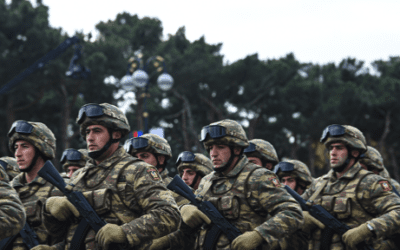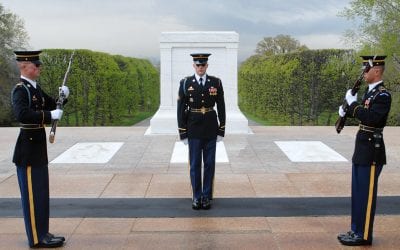Earlier this year, the Transportation Security Administration (TSA), released its 2015 annual statistical report, the year-end summary which permits them to boast about all the great work they’ve done.
According to the report, during 2015:
• TSA screened more than 708 million passengers, a 6.1 percent increase from 2014.
• TSA screened more than 432 million checked bags and more than 1.6 billion carry-on bags.
• Across U.S. airports, 98 percent of passengers waited at airport security less than 20 minutes, with 99 percent of TSA Pre✓ passengers waiting less than five minutes.
• TSA found and confiscated 2,653 firearms from carry-on bags, an almost 20 percent increase from 2014.
• Of the 2,653 firearms confiscated, 2,198 were loaded (82.8 percent).
Those stats look impressive, but are they?
According to TSA, last year about 56 percent, or 396.5 million passengers, got no expedited screening. That means about 8 million passengers waited in line for more than 20 minutes to get through TSA airport checkpoints. That’s a long wait for a lot of people.
In 2015, TSA used its own security personnel to test its airport checkpoints, where passengers attempted to smuggle prohibited weapons and explosives through security. Of the 70 tests, TSA Transportation Security Officers (TSOs) failed to detect the weapons and explosives 67 times, a 95.7 percent failure rate. That’s certainly an impressive failure on TSA’s part.
Let’s delve into that. In 2015, TSA successfully confiscated 2,653 weapons. If we apply TSA’s detection failure rate from their security test data, albeit a small sample, we conclude that TSA didn’t find as many as 59,044 weapons at their security checkpoints last year. Even if the actual failure rate were half that, it’s still alarming.
Peter V. Neffenger, TSA Administrator, testified before a congressional panel that TSOs would be better trained by the 4th quarter of last year to avoid the problems that led to the internal test failures.
He said, “My highest priority is to ensure solutions to the recent covert testing failures.”
Better training might help some situations. For example, in one test, an undercover agent carrying a fake explosive set off a checkpoint magnetometer, but the TSO failed to detect the explosive taped to the agent’s back during the pat-down. Better training will likely reduce that kind of failure, but what about other types of failures?
According to TSA, the MMW waves from full body scanners don’t penetrate the skin. They penetrate clothing, so TSA can detect objects we’ve hidden beneath our apparel. The scanners can detect metallic and nonmetallic weapons, even Glock synthetic polymer pistols. It can also detect dense explosives.
Unfortunately, the scanners, costing as much as $200,000 installed, can’t find items which have a low density, including many powders, liquids and thin plastic, items with the same or lower density than clothing. They can’t detect explosives in the form of a fine powder like that used in the attempted bombing of Flight 253 by the “Underwear Bomber.”
The scanners can’t even detect high density, C4 plastic explosives if secreted in a body cavity. Don’t think terrorists haven’t thought of that. Drug mules have been concealing their product that way for years.
Once travelers get a green light to continue after being scanned in a full body scanner, their screening is complete. Terrorists with undetected weapons and explosives are then free to board their flights. No training will overcome over-reliance on full body scanners which can’t detect the explosives TSA depends on them to find.
The x-ray checks of carry-on bags at TSA security checkpoints depend on TSOs recognizing them on their color coded monitors. TSOs routinely miss detecting weapons and other prohibited items in carry-on luggage, in large part due to human evolution. Over time, human beings developed the survival skill of pattern matching. It’s our ability to pick out patterns from masses of random visual data. We’ve become so good at it, we can see patterns in almost anything. Even though we sometimes get false positives, it has helped keep us alive.
The problem is, that skill makes it immensely difficult for us to detect exceptions in uniform data. Unfortunately, that’s what TSOs must do while searching for prohibited items on their carry-on x-ray monitors. More training won’t overcome evolution.
TSA prohibits liquids in 4-ounce bottles from being brought into a airplane’s cabin because they could be dangerous, yet they have no problem with a passenger bringing four 3.4-ounce containers of the same liquid into the cabin. If the 3.4-ounce bottles contain explosive materials, no amount of training will overcome TSA’s illogical, irrational regulation permitting them in passengers’ carry-ons.
It’s obvious that better training can’t reduce TSA failures from the majority of their root causes. They can’t overcome the failures due to the serious shortcomings of their full body scanners, the failures due to human evolution, or the failures of ill conceived regulations.
In order to carry out Mr. Neffenger’s mandate, TSA needs far more than better training for TSOs. TSA needs a complete overhaul to replace its failing technology, regulations and allocation of resources.
(Author’s Note: The article’s originally published calculated number of total weapons not found by TSA at their security checkpoints last year was incorrect. The actual number (59,044) is slightly less than the previously published total (61,697). It has been corrected in the article above.
The small reduction in the number in no way reduces the alarm raised by TSA’s gross failure to detect weapons in their security checkpoints and confiscate them. In fact, as stated in the article, if the actual failure rate was just half that number it would still be extremely alarming.)
After many years working in corporate America as a chemical engineer, executive and eventually CFO of a multinational manufacturer, Ned founded a tech consulting company and later restarted NSL Photography, his photography business. Before entering the corporate world, Ned worked as a Public Health Engineer for the Philadelphia Department of Public Health. As a well known corporate, travel and wildlife photographer, Ned travels the world writing about travel and photography, as well as running photography workshops, seminars and photowalks. Visit Ned’s Photography Blog and Galleries.



